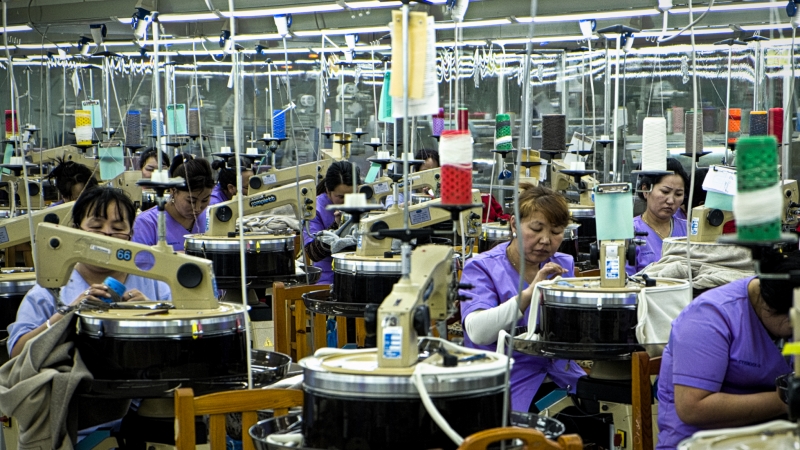Nomads' path to adaptation: pooling forces to cope with changes
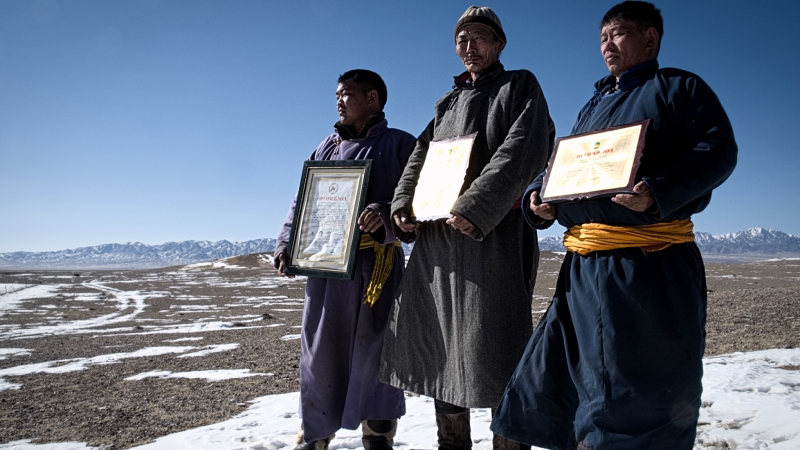
“I think Mongolia is not Mongolia without herders”, said Dorjgofov Tsevelravjaa, an old herdsman, who is part of a community in the Uvurkhangai region of the Gobi desert. Herders are developing adaptation strategies, which they believe will help them to be resilient against these changes. Mongolian herders are often presented as if entered a dead alley, the end of millennial-long nomadic life. Some of them would not agree, however, and believe that their livelihood may last despite epochal climate and social changes.
Climate change in this land-locked has pushed herders to their limits, struggling to adapt to increasingly extreme environmental events. But before climate change was perceived as a threat, social and economic changes had already impacted on herders livelihoods. Their deep culture and economy remains intertwined with the natural world. Mongolia is one of the last pastoral countries on Earth with an economy that is almost entirely dependant on the production of livestock. 80% of total land remains to be grasslands. “After mining, sheep wool and cashmere are the highest traded goods from Mongolia”, explains Tunga Ulambayaar, director of Saruul Khuduu Environmental Research, Training & Consulting, an organisation carrying out ecological studies on behalf of international and governmental organisations in Mongolia.
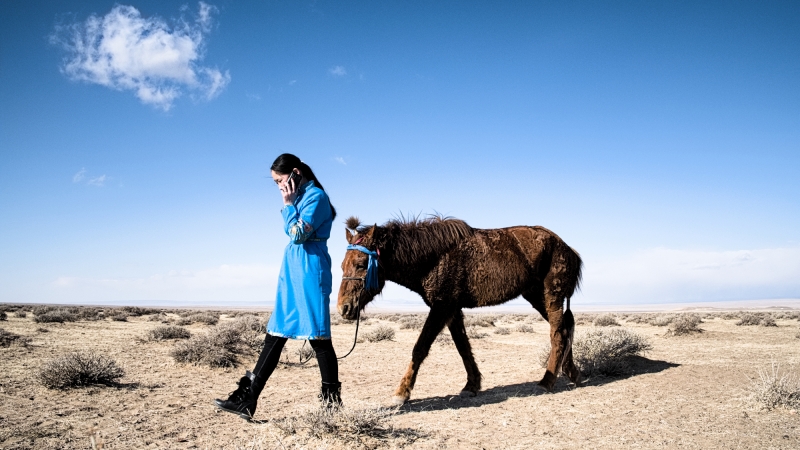
In the 1990’s the fall of the socialist regime resulted in the collapse of a long-standing herding system, known as Negdel, where herds and rangeland were state-owned. Under this system, traditional secular land tenure rights were replaced by government regulation. Livestock and pastures were allocated equally among herders. “As a result rangelands were sustainably grazed”, said Ulambayaar. Seasonal moves were directed, veterinary and social services provided, in addition to fodder being supplied during events of dzud. Out of the collapse of socialism a market-driven economy was born.
“Without a management scheme, herders found themselves alone, suddenly owners of their animals and the land, with no institutions to give them directions or support”, said Ulambayar.
“The number of livestock rapidly increased, and pastures soon started to degrade. Herders lost interest in the protection of their pastures and had no capacity to preserve them”, noted Ulambayar.
Batkhuyag Tseveravajaa, head of the Uvurkhangai community in the Gobi desert added: “Today the way we manage our herds is very different”. We used to herd Negdel-owned property, now livestock belongs to us, that’s why we do all that we can to increase our number of livestock. Before the market-driven economy, herders had no reason to upscale their production as they were given a fixed salary and were provided with social services by the government. Today, cashmere is a profitable resource and with there no longer being a state enforced cap on the number of livestock a herder can own, the number of goats for example, since the sixties, has risen from 4.5 to 23 million.
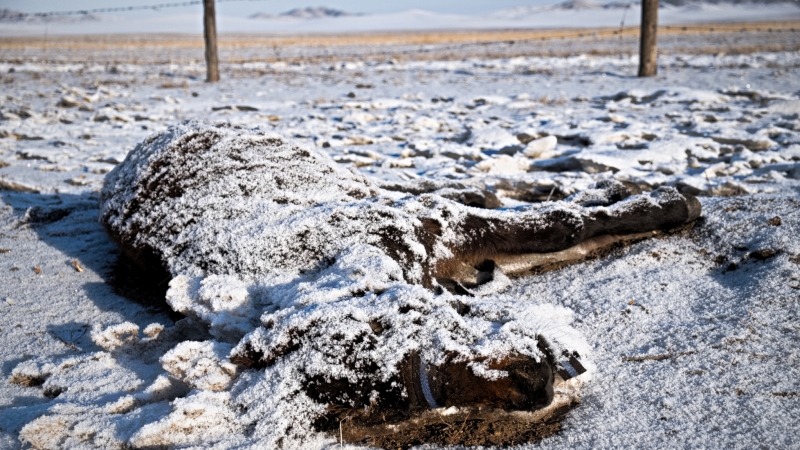
Dzud!
On top of this, there is climate change. Similarly to other extreme environments on earth, global warming is effecting Mongolia. “Over the last 70 years, the average air temperature has risen by 2.1 degrees centigrade, one of the highest increases recorded on Earth, and it may rise up to 5°C”, says Ulambayaar.
Increasing temperatures don’t just mean Mongolia is becoming warmer. Climate change manifests itself differently depending on the ecological region of Mongolia. Ulambayar explained:
“Extreme events are increasing in many regions. Cases of dzud, which means extremely severe winters in Mongolian language, are growing more frequent.”
“Some areas experience events of summer rain, whilst for others, increasingly intense winter storms”, she said.
Dzuds tend to have troubling impacts on herds: “Just a few inches more of snow than the average amount is enough to make the forage inaccessible, and cause a high mortality among the livestock. Nomads are forced to migrate to other districts, where they will place pressure on another fragile pastureland, managed by different community. Many herders have no other choice other than to move to the city”, said.
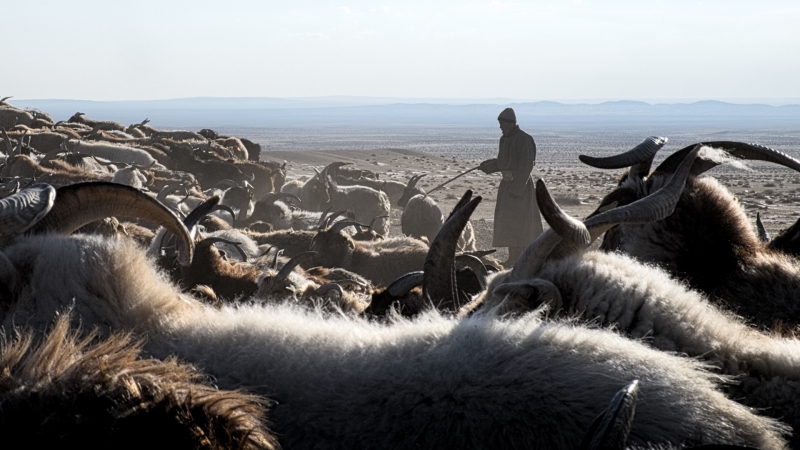
The winter of 1999 and 2000 dzuds resulted in the country losing one third of its national herd. Similarly, Ulambayar reports in the scientific journal World Development that 2 million head of livestock , a fifth of national herd, were lost in 2009. Nearly every winter a district or two are affected by dzud. Scientists warn that climate change translates in more future events of dzud.
Not only data show environmental changes in Mongolia. The most vulnerable are also the most attentive to how climate and the environments are altering:
“When I was a child this area used to have abundant grass. In recent years, sand storms have increased, precipitation has decreased and so the grass is not as good as it once was”, said Dorjgofov Tsevelravjaa.
Rivers, which are nothing more than shallow streams, are shrinking: “The Khunkeree river used to flow for 25 km, but these days it only goes as far as 20 km. So it is has shrunk”, said the herder.
Nomadic herders may not be able to cope with the increase in extreme weather events. Experts warn that pastures could be at a tipping point as a result of overgrazing and climate change. Despite this, some herders are trying to adapt by forming communities. These formalised groups allow them to manage their pastures, pool their labour and slow down, or even halt the degradation of their land. The herders believe that this could be the solution.
Herders are concerned. Deep wrinkles become deeper when Dorjgofov Tsevelravjaa said his uncertainties: “I am not sure what can be done against this. With declining precipitation plants will get scarce. Livestock will not be able to fatten, so the prices of skins will go down. Therefore, rural herders’ livelihoods may worsen.”
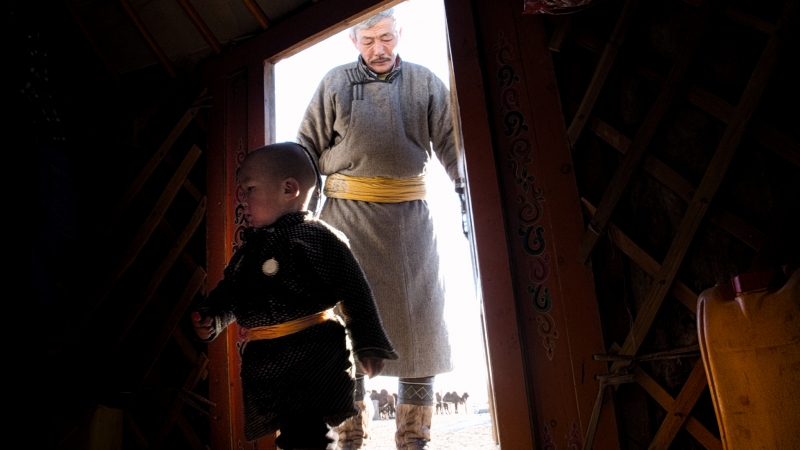
Herders solution
However, past studies have show that herders joining in formal communities improved their resilience against extreme weather conditions, and this could improve their resilience. “After the disastrous impacts of the winters in early 2000, many herders, assisted by non- governmental organisations, joined communities for the management of pastures and natural resources. About 2000 communities have been formed”, explained Dr Ulambayaar. She studied herders adaptive capacity, behavioural changes in response to external pressures, in 4 districts. She found that the formation of communities resulted in the pooling of resources and significantly reduced household vulnerability to dzud. Batkhuyag Tseveravajaa explained: “Together we collect hay and forage for the winter. Collectively we grow vegetables, comb goats, sheer sheep and ensure our river remains clean. These activities are quicker when carried out together.”.
Communities improve social support as well. “When community members have family emergencies, we help out by taking care of their livestock and household matters. We aim to teach our youth about the strength of collectivism and working together”, said Batkhuyag Tseveravajaa, who adds “We helped families that were badly affected by the disasters of 2002, 2003, and 2010. We have a Community Fund with about 5 million tugriks [approx 2000 euros]. Members in need of cash can take loans from this Fund.”
Not all communities last, as their longevity depends on the leader and their ability to unify the families within the community. “Ours and many others persist”, said Tsevelravja.
Spherical Image. The inside of a nomadic herder gher, is optimized for cold environment (Gobi Desert, Mongolia. Jacopo Pasotti, 2017)
According to Ulambayar herders in the Uvurkhangai community support and understand the benefits of co-operation.“Until now, communities have shown remarkable resilience, higher than individuals. And are the best to manage their own land. Nomads know their territory; they note the species of plants that are disappearing; the degradation of pastures and the loss of biodiversity. I believe the solution to climate and social change lies within a dialogue between the herds and the institutions. These should not define rules that could potentially be harmful for herders, but should help them in their ability to adapt to not only to climate and environmental change, but also to economic and social change. So far, it has proven to work”, concludes Ulambayar. Second before the video recorder of a long interview was shut down, she added:
“Finding adaptation strategies for Mongolian rural communities is therefore an economic, social, and humanitarian priority.”.
